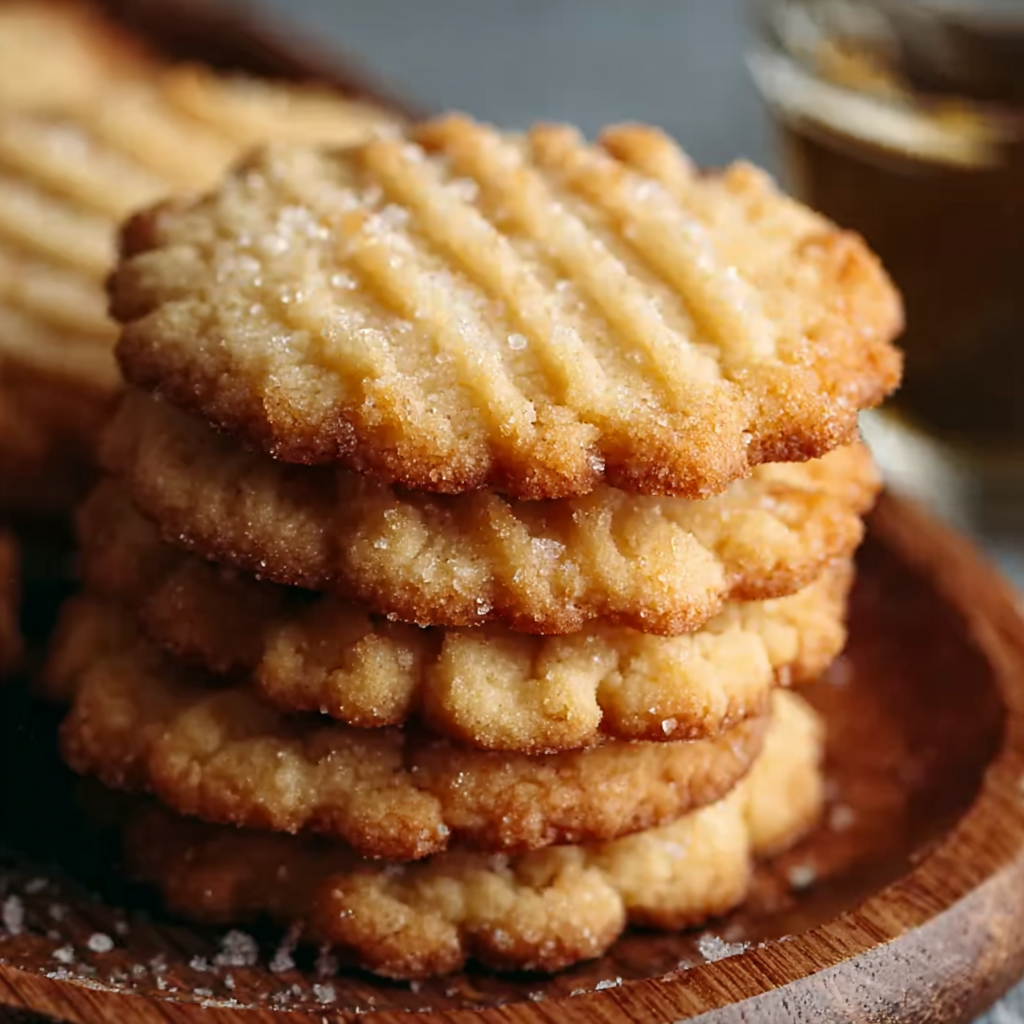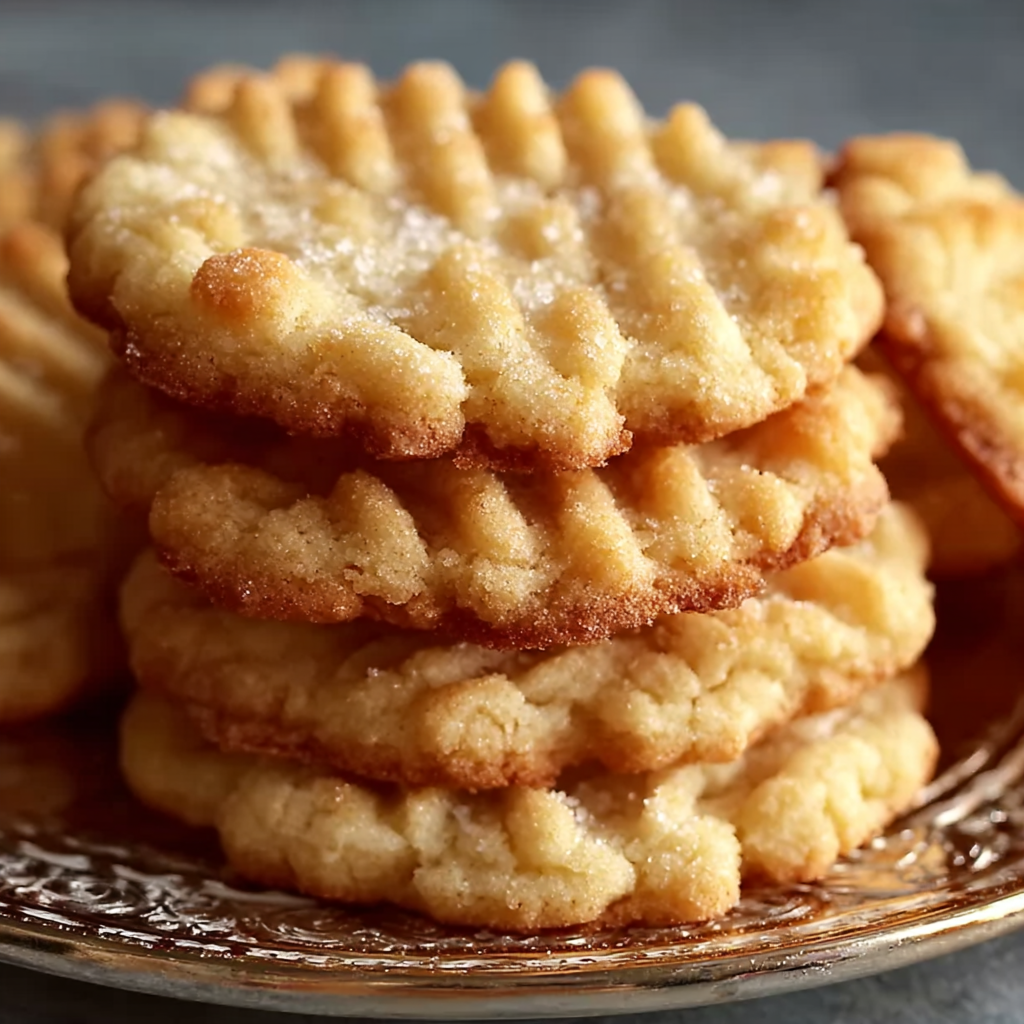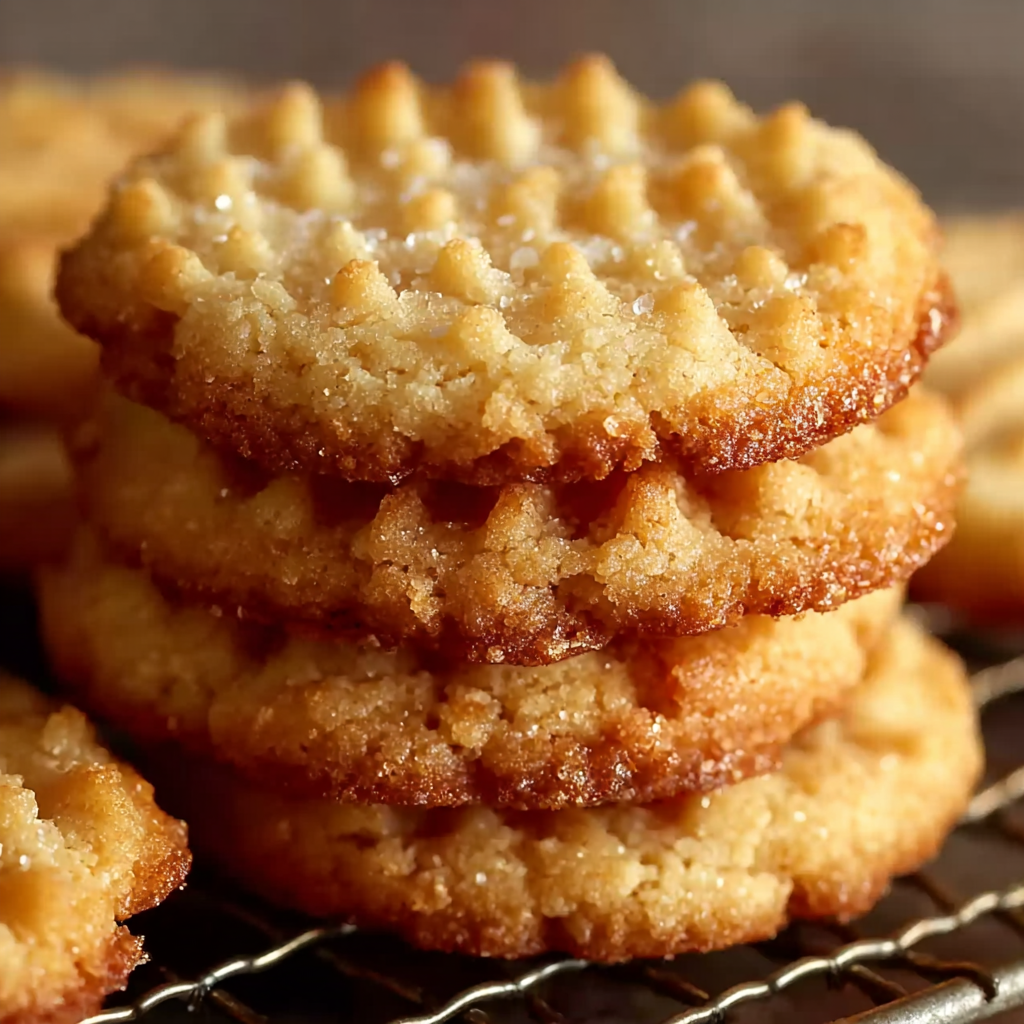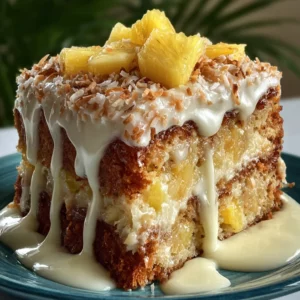Washboard Cookies
Washboard cookies are a nostalgic treat that blend simplicity with irresistible flavor and texture. These classic cookies earned their name from the lined pattern on top, created by pressing the dough with a fork or cookie press, which resembles the ridges of an old-fashioned washboard. The addition of shredded coconut gives them a unique twist—adding chewiness, light sweetness, and a subtle tropical note. This recipe honors the traditional washboard cookie while modernizing it with accessible ingredients and beginner-friendly techniques.
Whether you’re baking for the holidays or stocking up on everyday snacks, this coconut washboard cookies easy recipe delivers consistent results using baking flour, oats, and pantry staples. It’s also incredibly forgiving—ideal for new bakers who want a satisfying cookie without complicated steps or specialty tools. If you enjoy the rich, hearty taste of oatmeal-based cookies with golden edges and chewy centers, this version is a must-try.
Washboard cookies have their roots in old-fashioned cookie traditions that rely on texture as much as flavor. Unlike sugar cookies or gingersnaps, their appeal lies in their rustic charm. According to the history of cookies, oatmeal and coconut variations gained popularity in the early 20th century for their hearty, nutritious qualities. Today, recipes like this one continue that legacy. You can find inspiration from oatmeal cookie adaptations on Pinterest, showcasing similar textures and variations for bakers who enjoy experimenting.
Using all-purpose flour ensures a familiar, easy-to-handle dough and a consistent crumb. For those unfamiliar with the role flour plays in cookies, this guide explains its importance in achieving the right balance of tenderness and structure. When combined with rolled oats, which add chewiness and density (learn more), these cookies bake into golden, flavorful rounds with the perfect balance of softness and crispness.
What Makes This Coconut Washboard Cookie Recipe Easy?
This coconut washboard cookie recipe stands out because it simplifies the baking process without sacrificing flavor or texture. Whether you’re a first-time baker or someone looking for a reliable go-to cookie recipe, the steps here are designed for ease, speed, and flexibility.
-
Pantry-friendly ingredients: Every item—all-purpose flour, butter, oats, sugar, and shredded coconut—is a common baking staple. No need for specialty flours or tools.
-
No mandatory chilling time: While optional chilling can improve cookie shape, this dough bakes well right after mixing.
-
Forgiving dough: Unlike cut-out sugar cookies, this dough doesn’t require precision. It’s perfect for scooping, rolling, or pressing.
-
Beginner-friendly texture: Because of the oats and coconut, this dough holds its shape and is easy to handle—even for those new to baking.
A big reason for this ease is the use of baking flour and leavening agents like baking powder and soda. These ingredients allow the cookies to spread and rise in just the right way. Learn more about how baking powder contributes to cookie structure here.
If you’re seeking inspiration for other coconut treats or ways to tweak this cookie, check out this Pinterest board on coconut desserts. It’s full of ideas to help you get creative without complicating your baking experience.
This recipe keeps things simple, making it perfect for everyday baking or last-minute gatherings. The ease of preparation means you’ll spend less time mixing and more time enjoying golden, chewy cookies with just the right amount of coconut crunch.
Key Ingredients and Why They Matter
Each ingredient in this washboard cookies recipe with baking flour plays a specific role in delivering the ideal cookie texture—crispy on the edges, chewy in the center, and rich with coconut flavor. Understanding what each component does helps you troubleshoot and customize future batches.
-
Unsalted Butter
Butter is the base of flavor and moisture. Using unsalted butter gives you better control over the salt content, ensuring a well-balanced taste. Softening the butter first allows for better creaming with sugar, resulting in a lighter, airier texture. -
Brown Sugar & Granulated Sugar
This duo creates the signature chewiness. Brown sugar brings molasses depth and moisture, while granulated sugar helps the cookies crisp up and brown evenly. Together, they give a caramelized richness essential to the washboard cookie’s character. -
Large Eggs
Eggs bind the ingredients and contribute to the cookie’s structure. They also provide moisture and richness. Using room-temperature eggs ensures even mixing. -
Vanilla Extract
Vanilla adds aroma and enhances the sweetness of the coconut. Pure vanilla extract is recommended for best flavor. -
All-Purpose Flour
This standard baking flour is ideal for consistent results. It gives the cookies structure without making them dense. For more on its function in baking, read this flour breakdown. -
Baking Powder & Baking Soda
These leavening agents help the dough rise just enough for a tender crumb. They also balance acidity and contribute to the golden brown edges. Learn how baking powder works for better results in other recipes, too. -
Salt
A small amount enhances flavor by balancing sweetness and intensifying the coconut’s natural taste. -
Old-Fashioned Rolled Oats
These oats offer a hearty, chewy texture that sets washboard cookies apart from smoother cookies like shortbread. Unlike quick oats, they retain structure during baking. Explore more about oats and their role in baking here. -
Shredded Coconut
The star of the recipe. It adds chewiness, a subtle nutty flavor, and a beautifully toasted edge. You can use sweetened or unsweetened depending on your preference. Sweetened adds more moisture and sweetness, while unsweetened gives a lighter finish. This Pinterest collection offers vegan and texture-focused tips if you’re experimenting with coconut-based recipes.
Each ingredient is carefully chosen to balance flavor, texture, and ease of preparation, making this recipe not just accessible, but foolproof.
Step-by-Step Instructions with Tips
Mastering the coconut washboard cookie recipe is all about following a few key techniques that ensure a perfect batch every time. This guide walks you through each step with expert tips to maximize flavor and texture.
1. Preheat and Prepare
-
Preheat your oven to 350°F (175°C).
-
Line baking sheets with parchment paper to prevent sticking and ensure even baking.
2. Cream the Butter and Sugars
-
In a large mixing bowl, combine 1 cup of unsalted butter, 1 cup of packed brown sugar, and ½ cup of granulated sugar.
-
Beat on medium speed until light and fluffy. This aeration is key for a soft yet crisp cookie.
-
For a visual guide on proper creaming technique, explore this Pinterest tutorial on fork-pressed cookie preparation.
3. Add Eggs and Vanilla
-
Add 2 large eggs, one at a time, beating well after each addition.
-
Stir in 1 teaspoon of vanilla extract.
-
Make sure the mixture is smooth and slightly thickened. Room temperature eggs help everything blend evenly.
4. Mix Dry Ingredients Separately
-
In another bowl, whisk together:
-
2 cups of all-purpose flour
-
1 teaspoon of baking powder
-
1 teaspoon of baking soda
-
½ teaspoon of salt
-
-
This step ensures even distribution of leavening agents, which help the cookies rise just enough without becoming cakey.
5. Combine Wet and Dry Ingredients
-
Gradually add the dry mixture to the wet mixture, stirring just until combined.
-
Overmixing can make the cookies tough, so stop when no dry flour remains visible.
6. Add Oats and Coconut
-
Fold in 2 cups of old-fashioned rolled oats and 1 cup of shredded coconut.
-
Ensure even distribution throughout the dough. For coconut lovers, this Pinterest board offers more ideas to intensify the coconut flavor.
7. Scoop and Shape the Dough
-
Scoop tablespoon-sized portions of dough and place them on the prepared baking sheets, spacing them about 2 inches apart.
-
Flatten gently with a fork to create the iconic washboard effect. You can also use a cookie press if you prefer more uniform shaping.
8. Bake and Cool
-
Bake for 10–12 minutes, or until the edges are lightly golden and the centers are set.
-
Avoid overbaking; cookies will continue to firm up as they cool.
-
Let them cool on the baking sheet for 5 minutes before transferring to a wire rack.
9. Store Properly
-
Once fully cooled, store in an airtight container at room temperature for up to one week.
-
If you want to freeze them, lay cookies flat in a sealed container with parchment between layers.
This step-by-step process ensures consistent results every time. Each detail—from creaming the butter to pressing the dough—affects how these washboard cookies with baking flour bake and taste. For more beginner-friendly cookie ideas, check out this Pinterest baking guide.
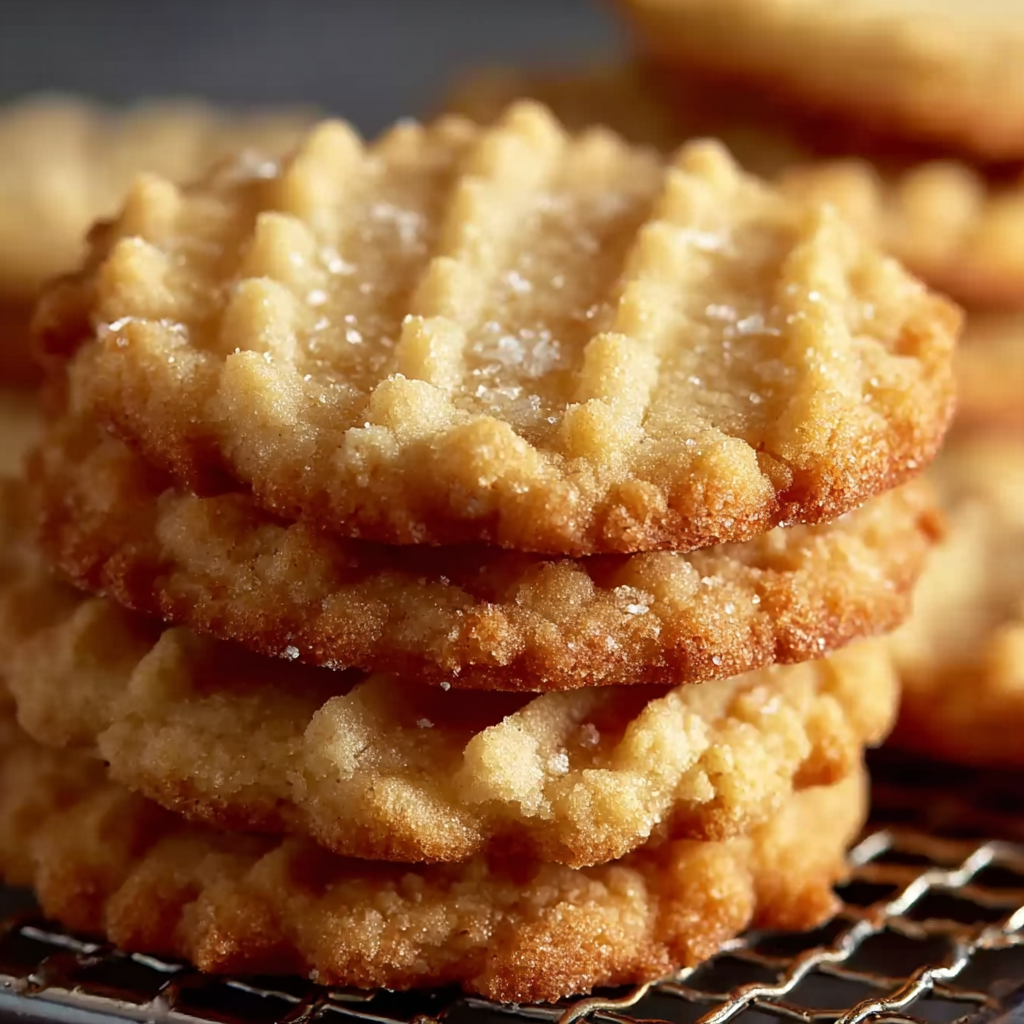
Texture, Taste & Appearance Expectations
Once baked, coconut washboard cookies offer a delightful combination of textures and flavors that make them a household favorite. These cookies are designed to be:
-
Chewy in the center – thanks to the oats and brown sugar, which hold moisture well.
-
Crispy on the edges – the granulated sugar and butter allow the outer rim to caramelize slightly.
-
Toasty and nutty – the shredded coconut develops a golden finish, adding a subtle crunch and complex flavor.
-
Visually appealing – the fork or press imprint forms the signature washboard pattern, giving the cookies a vintage, rustic charm.
When done right, these cookies will be lightly golden on the bottom, slightly puffed in the middle, and evenly spaced. For best results, avoid underbaking—they should be just set in the center when you take them out of the oven.
Recipe Variations to Try
This recipe is flexible enough to accommodate your creativity or dietary needs. Here are a few ways to customize your washboard cookies:
-
Add-ins:
-
Chocolate chips or white chocolate chunks for extra sweetness.
-
Chopped walnuts, pecans, or almonds for crunch and richness.
-
Dried cranberries, raisins, or chopped dates for fruity undertones.
-
-
Flavor twists:
-
Add a pinch of cinnamon or nutmeg to warm up the flavor profile.
-
Use lemon or orange zest for a bright, citrusy note.
-
-
Vegan version:
-
Substitute butter with coconut oil or vegan butter.
-
Use flax eggs (1 tbsp ground flax + 3 tbsp water per egg) as a binding agent.
-
See this vegan baking guide for more substitution tips.
-
-
Gluten-free version:
-
Swap all-purpose flour with a 1:1 gluten-free flour blend.
-
Ensure oats are labeled gluten-free.
-
-
Make-ahead & freeze:
-
Roll dough into balls and freeze for up to 3 months.
-
Bake directly from frozen, adding 1–2 minutes to the bake time.
-
Experimenting with these variations keeps the recipe fresh and fun while still preserving its core chewy coconut charm.
How to Store & Freeze Washboard Cookies
Storing these cookies properly preserves their texture and flavor:
-
Room Temperature:
-
Store cookies in an airtight container for up to 7 days.
-
Add a slice of bread inside the container to maintain softness.
-
-
Refrigerator:
-
Not recommended for already baked cookies—it may dry them out.
-
Dough can be chilled for up to 48 hours before baking.
-
-
Freezer:
-
Baked cookies: Cool completely, then place in a freezer-safe bag with parchment paper between layers. Freeze for up to 3 months.
-
Raw dough: Scoop dough into balls and freeze. Bake directly from frozen—just add 1–2 minutes to the baking time.
-
These storage tips ensure your washboard cookies with coconut stay fresh whether you’re serving them now or later.
Nutrition Facts Per Cookie (Approximate)
Each coconut washboard cookie delivers a satisfying bite with a nutritional profile that reflects its ingredients. Here’s an estimate per cookie (based on a batch of 36):
-
Calories: ~135
-
Fat: 7g
-
Saturated Fat: 4g
-
Carbohydrates: 16g
-
Sugar: 9g
-
Protein: 2g
-
Fiber: 1g
Using unsweetened coconut or reducing sugar can slightly improve the macros. For a more nutrient-rich version, consider adding chopped nuts or swapping flour with whole wheat pastry flour.
Troubleshooting Common Issues
Even simple recipes like this one can go off track. Here are common issues and fixes:
-
Cookies spread too much:
-
Dough too warm: Chill for 15–30 minutes before baking.
-
Too little flour: Measure flour using the spoon-and-level method.
-
-
Dry or crumbly texture:
-
Overbaked: Reduce baking time by 1–2 minutes.
-
Not enough fat: Ensure you used a full cup of butter.
-
-
Uneven baking:
-
Oven hotspots: Rotate baking sheets halfway through.
-
Cookies too close: Leave 2 inches between dough scoops.
-
-
No washboard pattern after baking:
-
Didn’t press deep enough: Use a firm press with a fork.
-
Dough too sticky: Lightly flour the fork or chill dough before shaping.
-
-
Sticky dough:
-
Slightly chill the dough before shaping or coat your hands with flour.
-
Addressing these issues ensures every batch of coconut washboard cookies turns out as perfect as the last.
Coconut & Baking Flour FAQs
-
What makes washboard cookies different from oatmeal cookies?
Washboard cookies are pressed to create a lined surface, while oatmeal cookies are typically drop cookies. Both contain oats, but washboard cookies often include shredded coconut for added chew and flavor. -
Can I use sweetened shredded coconut?
Yes. Sweetened coconut adds extra moisture and sweetness. If using unsweetened, you may want to slightly increase the sugar. -
How do I make cookies softer or crunchier?
For softer cookies, underbake by a minute and store in an airtight container with a slice of bread. For crunchier cookies, bake a minute or two longer and use more granulated sugar. -
Can I substitute quick oats for rolled oats?
You can, but quick oats will make the cookies softer and less chewy. Rolled oats are preferred for their texture. -
How long should I chill the dough?
Chilling is optional but helps control spread. Chill for 15–30 minutes if your kitchen is warm. -
What flour is best for cookies – is all-purpose okay?
Yes. All-purpose flour is ideal for most cookie recipes. For a denser texture, try substituting a portion with whole wheat flour. -
Can I make this dough ahead of time?
Yes. You can store the dough in the fridge for up to 48 hours or freeze it for longer storage. -
How do I get the washboard texture?
Press each dough ball with a fork dipped in flour or use a cookie press tool for even ridges.
Coconut Washboard Cookies Easy Recipe
This easy coconut washboard cookies recipe combines the chewiness of oats, the sweetness of coconut, and the golden finish of classic cookies in one simple, beginner-friendly treat. Perfectly crisped edges and a soft center make these nostalgic cookies a standout. Whether shaped by fork or cookie press, they deliver that iconic washboard texture every time.
- Author: Clara
Ingredients
- 1 cup unsalted butter, softened
- 1 cup brown sugar, packed
- ½ cup granulated sugar
- 2 large eggs
- 1 tsp vanilla extract
- 2 cups all-purpose flour
- 1 tsp baking powder
- 1 tsp baking soda
- ½ tsp salt
- 2 cups old-fashioned rolled oats
- 1 cup shredded coconut (sweetened or unsweetened, your choice)
Instructions
Preheat the oven to 350°F (175°C) and line baking sheets with parchment paper.
In a large bowl, cream together the butter, brown sugar, and granulated sugar until light and fluffy.
Add the eggs one at a time, mixing well after each. Stir in the vanilla extract.
In a separate bowl, whisk together the flour, baking powder, baking soda, and salt.
Gradually add the dry ingredients to the wet mixture, mixing until just combined.
Stir in the rolled oats and shredded coconut until evenly distributed.
Scoop tablespoon-sized portions of dough and place them on the prepared baking sheets, leaving space between each.
Press the tops gently with a fork to flatten slightly and create a lined “washboard” effect.
Bake for 10–12 minutes or until the edges are lightly golden and the centers are set.
Allow cookies to cool on the baking sheet for a few minutes before transferring them to a wire rack to cool completely.
Store in an airtight container at room temperature for up to one week.
Notes
-
Use old-fashioned rolled oats for the best chewy texture.
-
Chill the dough for 15–30 minutes if your cookies are spreading too much.
-
Sweetened or unsweetened coconut can be used—adjust sugar to taste.
-
For a stronger coconut flavor, lightly toast the shredded coconut before adding.
-
If baking in batches, keep unused dough refrigerated between rounds.
